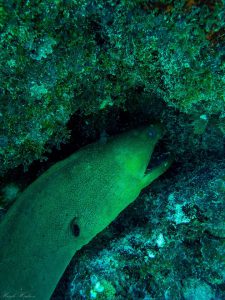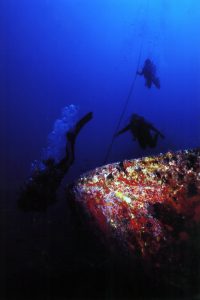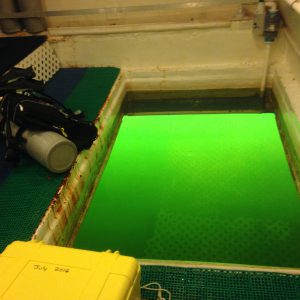Thursday, Sept 14th, I’ll be doing a presentation on Artificial Reefs in Key Largo based on my book, Islands in the Sand: An Introduction to Artificial Reefs in the USA
Since the book came out in 2009, I needed to update a few things for the PowerPoint show. One of which was to check on a guy, David Walter of Walter Marine. I’ll explain. First, artificial reefs for those who might not be as familiar are a variety of items that rest in the water and attract marine life which take up residence and create a reef complete with coral, sponges, fish, etc. The marine creatures don’t mind that it isn’t a natural rock formation – it provides shelter and over time, marine growth increases. The most spectacular artificial reefs tend to be shipwrecks, but there are lots of others. Many are underwater by accident, but the planned ones are the focus of the book. Again, taking a massive ship like the 510-foot USS Spiegel Grove, prepping her and sending her to the bottom is a huge effort that takes years of planning/work and lots of money. There are, however, way cool and smaller options.
Every other year, the big scuba trade show is in Orlando and the year I was doing intense research for the book coincided with the DEMA show. I was able to talk with several people involved with artificial reef work, one of whom was David. I have previously posted about Reefball (TM) that is a non-profit organization. They create modules that can be deployed to create a reef based on what size and shape is desired.
David, who as he explained always liked to figure things out for himself, did a few projects with them and then decided to establish his own business. (www.reefmaker.net) (Note: not sure why, but the website wasn’t loading when I wrote this. It was fine the other day.)
Anyway, back to David. He played around with designs and materials and it was fascinating to talk to him. I popped onto his website the other day to see how he was doing and he quickly responded. His business has expanded and he sent me the photo here. The uses for his products have also expanded and it’s nice to see. (I will acknowledge there are opponents to artificial reef work and they are certainly entitled to their opinion.) I love the entrepreneurial spirit and I love a good artificial reef, so I hope Walter Marine continues to thrive. By the way, the lovey fish along with the jelllyfish in the photo is a type of triggerfish.








